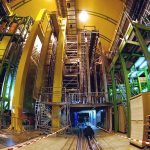Three new physics experiments could revamp the standard model0
- From Around the Web, Science & Technology
- September 21, 2018
Physicists build giant machines to study tiny particles

Physicists build giant machines to study tiny particles

Work has begun on a major upgrade to the Large Hadron Collider (LHC) particle smasher.

There’s a new particle in town, and it’s a double-charmingly heavy beast.

Long ago, physicists identified and categorized the components of the visible universe. Up until recently, 16 particles formed everything in the known universe. But now, thanks to the efforts of physicists at CERN working with the Large Hadron Collider (LHC), we have added another particle, the Higgs boson, to the Standard Model of physics.

One of the Large Hadron Collider’s huge experiments has been given what’s described as a “heart transplant”.

One of the biggest questions that keep physicists up at night is why there is more matter than antimatter in the universe.

The AWAKE experiment at CERN made a breakthrough at the end of last year. A long-term technology-development project, its aim is to drag electrons through a plasma, behind a beam of protons, and provide a route to higher energies than the Large Hadron Collider

In December of last year, scientists at the Large Hadron Collider in Europe announced startling results hinting at the existence of an undiscovered subatomic particle—one with a mass six times heavier than the Higgs boson, the particle that made headlines in 2012.

After its much heralded re-start last year, has the world’s biggest machine, the Large Hadron Collider, found a new particle?

Time to break the standard model of physics?